Related Research Articles

Marie Salomea Skłodowska–Curie was a Polish and naturalized-French physicist and chemist who conducted pioneering research on radioactivity. She was the first woman to win a Nobel Prize, the first person to win a Nobel Prize twice, and the only person to win a Nobel Prize in two scientific fields. Her husband, Pierre Curie, was a co-winner of her first Nobel Prize, making them the first-ever married couple to win the Nobel Prize and launching the Curie family legacy of five Nobel Prizes. She was, in 1906, the first woman to become a professor at the University of Paris.
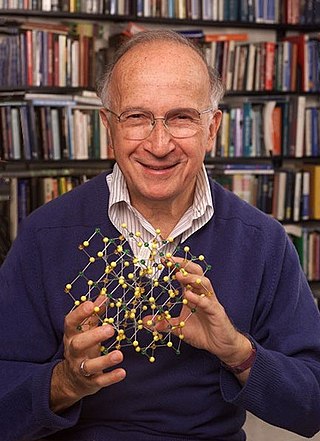
Roald Hoffmann is a Polish-American theoretical chemist who won the 1981 Nobel Prize in Chemistry. He has also published plays and poetry. He is the Frank H. T. Rhodes Professor of Humane Letters, Emeritus, at Cornell University, in Ithaca, New York.

Kazimierz Fajans was a Polish American physical chemist of Polish-Jewish origin, a pioneer in the science of radioactivity and the co-discoverer of chemical element protactinium.

The American Chemical Society (ACS) is a scientific society based in the United States that supports scientific inquiry in the field of chemistry. Founded in 1876 at New York University, the ACS currently has more than 155,000 members at all degree levels and in all fields of chemistry, chemical engineering, and related fields. It is one of the world's largest scientific societies by membership. The ACS is a 501(c)(3) non-profit organization and holds a congressional charter under Title 36 of the United States Code. Its headquarters are located in Washington, D.C., and it has a large concentration of staff in Columbus, Ohio.
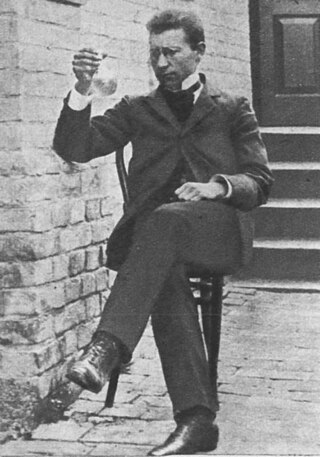
Wojciech Alojzy Świętosławski was a Polish physical chemist, who is considered the "father of modern thermochemistry". He developed a static method of cryometric measurement and a new method of testing coal. Świętosławski was Vice-Chairman of the International Union of Pure and Applied Chemistry (IUPAC) and created the foundations for a new branch of physical chemistry: polyazeotropy. In 1933 he became a member of the Temporary Scientific and Advisory Committee

The Polish Academy of Arts and Sciences or Polish Academy of Learning, headquartered in Kraków and founded in 1872, is one of two institutions in contemporary Poland having the nature of an academy of sciences.

Jędrzej Śniadecki was a Polish writer, physician, chemist, biologist and philosopher. His achievements include being the first person who linked rickets to lack of sunlight. He also created modern Polish terminology in the field of chemistry.

Antoni Grabowski was a Polish chemical engineer, and an activist of the early Esperanto movement. His translations had an influential impact on the development of Esperanto into a language of literature.
The Polish Journal of Chemistry was a peer-reviewed scientific journal on chemistry and the official journal of the Polish Chemical Society. The journal covered all fields of pure chemistry as well as medicinal, macromolecular and supramolecular chemistry, and molecular modelling. It was established in 1921 under the title Roczniki Chemii and obtained its later title in 1978. The last editor-in-chief was Z. Galus.
Jan Zaleski was a Polish biochemist who made significant contributions to the understanding of blood chemistry.

The Proceedings of the USSR Academy of Sciences was a Soviet journal that was dedicated to publishing original, academic research papers in physics, mathematics, chemistry, geology, and biology. It was first published in 1933 and ended in 1992 with volume 322, issue 3.

Osman Achmatowicz was a Polish professor of chemistry of Lipka Tatar descent. His son, Osman Achmatowicz Jr., is credited with the Achmatowicz reaction in 1971.

Marek Andrzej Trojanowicz is a Polish chemist, professor of chemical sciences with specialization in analytical chemistry, academic staff member, and head of the Laboratory for Flow Analysis and Chromatography, University of Warsaw, Poland.
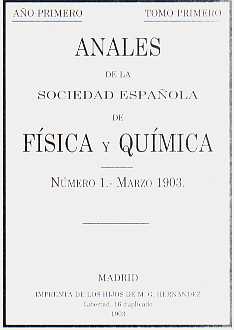
The Spanish Royal Society of Chemistry (RSEQ) is a Spanish scientific society dedicated to the development and dissemination of chemistry, in its aspect of pure science and in its applications. It originated in 1980 after the split of the Spanish Royal Society of Physics and Chemistry which itself was founded in 1903.

The Polish Chemical Society is a professional learned society of Polish chemists founded in 1919 to represent the interests of Polish chemists on the local, national and international levels.
Filip Neriusz Walter or Philippe Walter was a Polish chemist and pioneer of organic chemistry who worked in Paris. A pioneer of organic chemistry, he was extracted and characterized several compounds including toluene and octene.
Krishnaswami Venkataraman FNA, FASc, FNASc, FRSC (1901–1981), popularly known as KV, was an Indian organic chemist and the first Indian director at National Chemical Laboratory and University Department of Chemical Technology, Mumbai (UDCT). He was known for the demonstration of an organic chemical reaction involving 2-acetoxyacetophenones which later came to be known as the Baker–Venkataraman rearrangement and for his contributions in developing NCL into one of the leading research centres in organic chemistry. He was an elected fellow of several science academies which included the Royal Society of Chemistry, Academy of Sciences Leopoldina, USSR Academy of Sciences, Prussian Academy of Sciences, Polish Academy of Sciences, Indian Academy of Sciences, and the Indian National Science Academy. The Government of India awarded him the Padma Bhushan, the third highest Indian civilian award, in 1961.
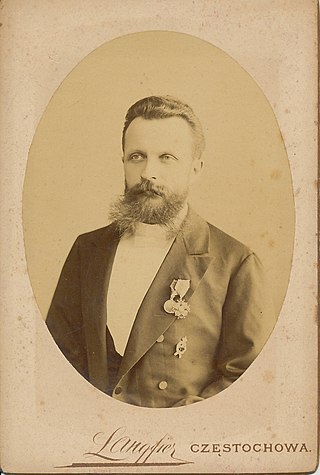
Bolesław Masłowski was a Polish chemist. He contributed to the dyeing industry.
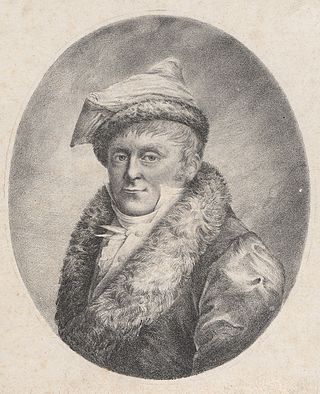
Count Aleksander Franciszek Chodkiewicz was a Polish writer, playwright, chemist, lithographer, patron of the arts, collector, military officer and politician.
References
- 1 2 Dolecki, M. (2007). "Physico-chemical topics discussed in the journal 'Chemik Polski'". Analecta - Studia i Materialy z Dziejów Nauki (in Polish). Polish Academy of Sciences. 1–2 (31–32): 139–163. ISSN 1230-1159.
- ↑ Lichocka, Halina (2008). "Chapter 11. Poland: Chemists in a divided country. The long-lasting genesis and early history of the Polish Chemical Society 1767-1923". In Kildebæk Nielsen, Anita; Štrbáňová, Soňa (eds.). Creating networks in chemistry: the founding and early history of chemical societies in Europe. Royal Society of Chemistry. pp. 243–244. ISBN 978-0-85404-279-1.
- 1 2 The Review of the Polish Academy of Sciences. Polish Academy of Sciences. 7–8: 72. 1962. ISSN 0032-2776.
{{cite journal}}: Missing or empty|title=(help)